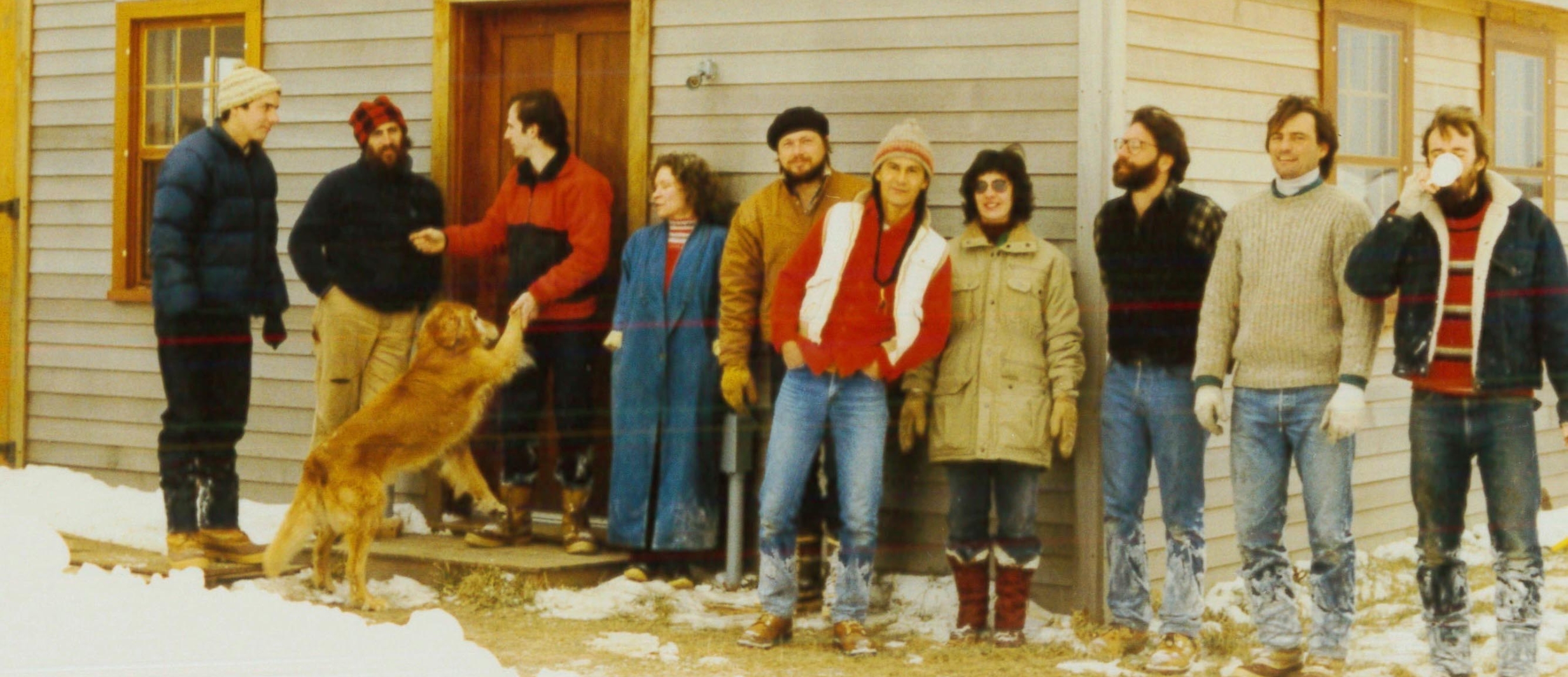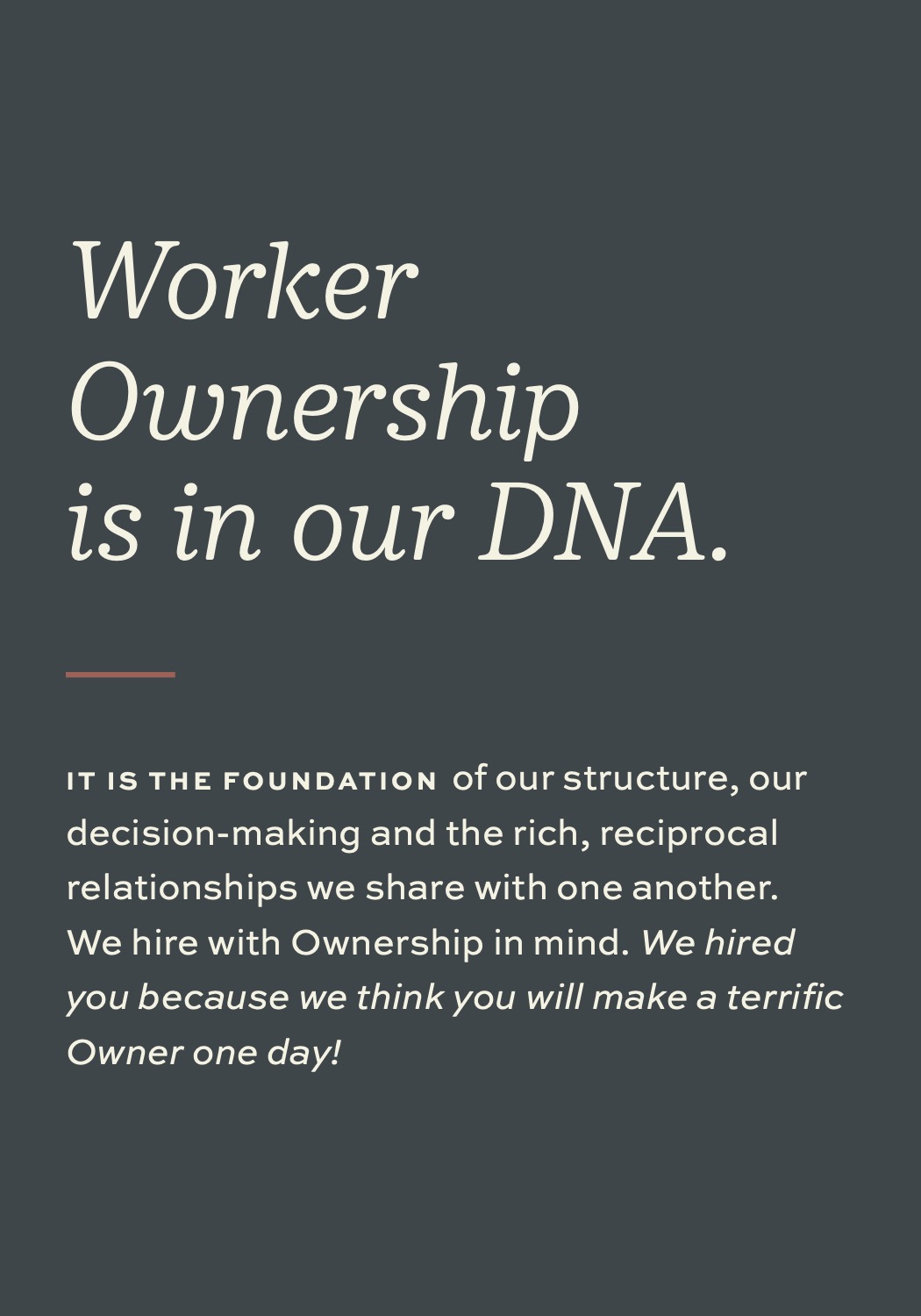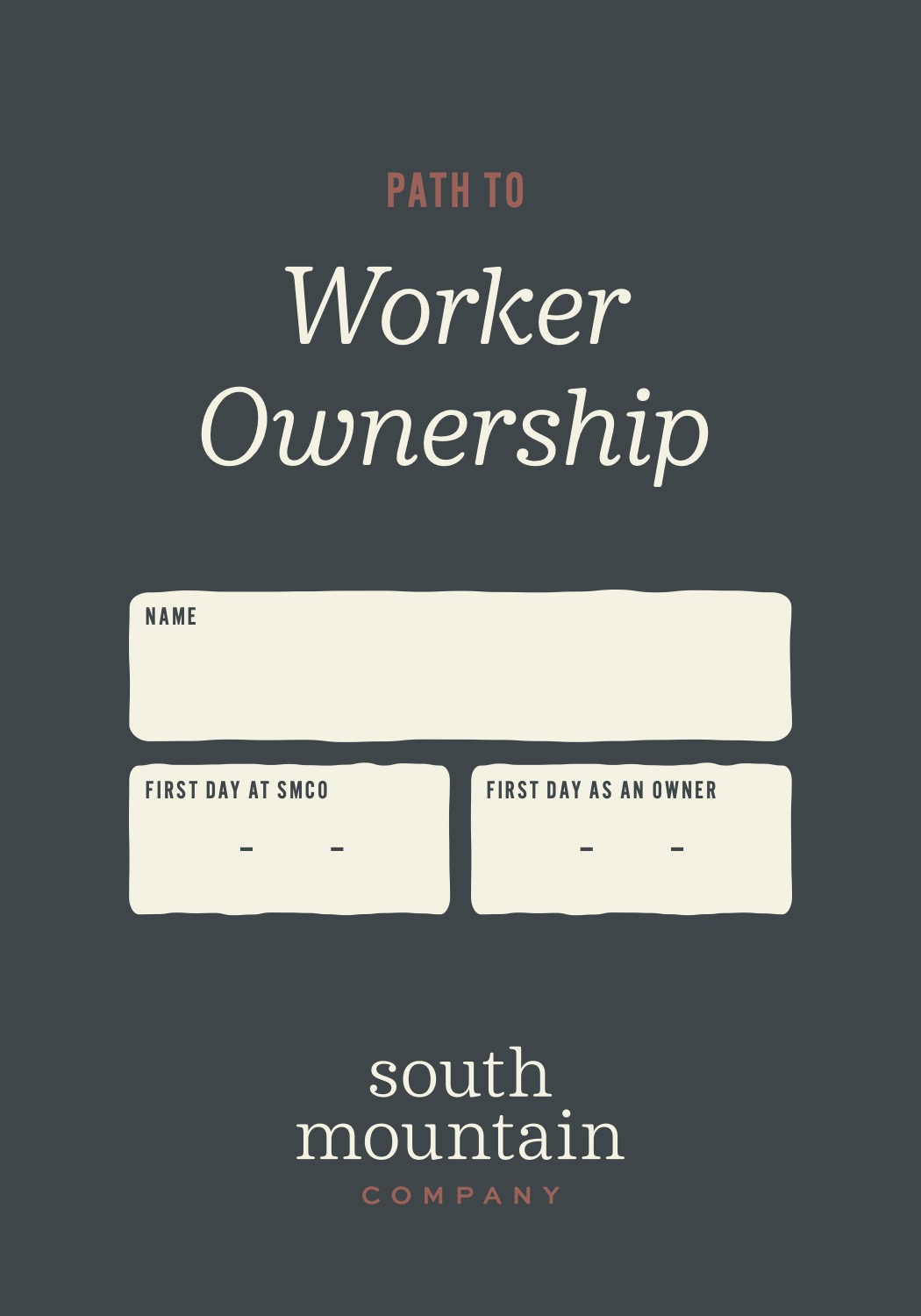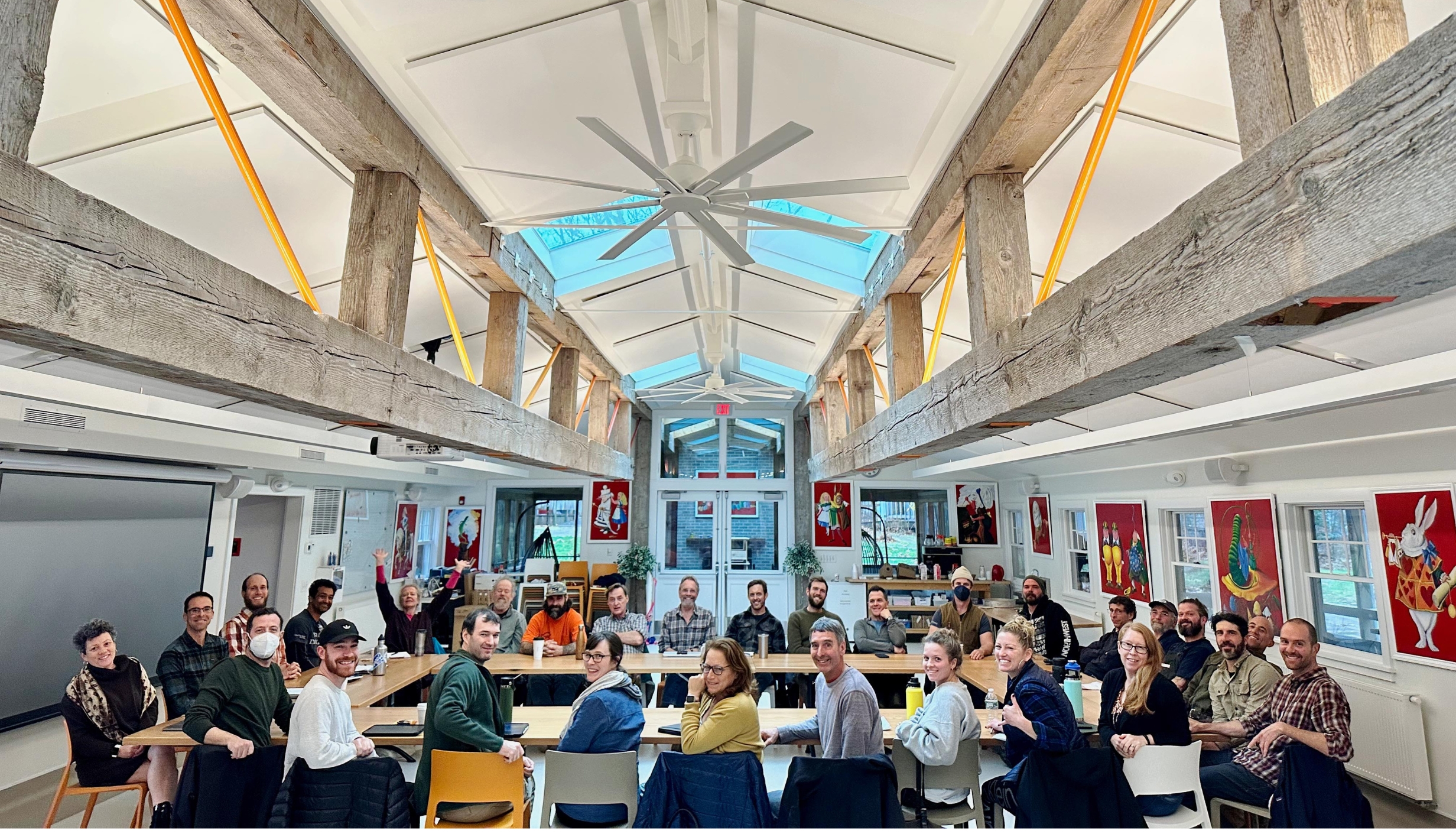
In 1987, South Mountain took a radical leap. Overnight, we went from a sole proprietorship to a worker-owned cooperative. At the time, we thought the change was more symbolic that substantive. We were wrong. It changed everything.
And though we don’t have definitive proof, we believe it’s the secret to our long-term success.
In the words of our founder John Abrams: South Mountain began as a cabinetmaking and woodworking shop in New City, New York in 1973. There were three equal partners: Kingsley Van Wagner, Mitchell Posin, and myself. In 1975, Mitchell and I went to Martha’s Vineyard to design and build a house for my folks. Kingsley elected to remain behind. On the Island, other projects came our way, and we stayed. hiring Steve Sinnett, Heikki Soikkeli, and Pete Ives in quick succession.
In the early eighties, Heikki left to go into business for himself, and Mitchell’s interest gradually waned as his commitment to farming increased. When he withdrew from the partnership, I became sole proprietor. By 1985, there were 10 employees and . rumblings about change had begun to gather momentum. Our growth in the previous few years, although hardly explosive, was unplanned; it had brought us to an unsettling perch, like leaning against a wobbly railing on a second-floor balcony. No longer did the company have the feeling of a small extended family.
The company had become too large to run on instinct alone—things were getting more complex, and it was clear a new structure was needed to preserve what mattered most. Steve and Pete started the conversation. They told me they wanted spend their careers at SMCo but needed more than just an hourly wage to make that commitment. It quickly became clear that this wasn't a one-time phenomenon but would come up again and again if the company continued to succeed. A system was needed to continuously welcome others in, offering more participation in decision-making, greater responsibility, and opportunities to share profits. With some trepidation, we hired attorney Peter Pitegoff at the Industrial Cooperatives Association (now The ICA Group) to help.
On January 1, 1987, I signed SMCo over to a new worker cooperative corporation. Steve, Pete, and I were the original three owners. Decades later, we have 20 active owners, 20 on-the-way, and innumerable stories to tell.
Tenures at worker-owned companies are, on average, 50% longer than traditional businesses.
At the time of writing, the average tenure is 10 years, even after a wave of recent retirements. Over the past 12 years, nine people stepped away after a combined 250 years of work—an average of 32 years each.
When people feel like they belong, they stay. And when they stay, the company gains something priceless: deep experience, long-standing relationships, and a culture that gets stronger with every generation.
When the people making decisions also feel the consequences, they make better choices.
Worker-owners are far less likely to suppress wages, outsource jobs, or cut corners that harm the places and/or people they live alongside.
Shared responsibility shines brightest in tough moments.
Take the Great Recession. In 2008, we agreed—together—to take a universal 20% pay cut to keep everyone employed. It wasn’t easy, but we were all in it together.
And it made us stronger.
Worker ownership also changes how wealth flows. Employees of co-ops earn 33% higher incomes, hold 92% higher household net worth, and have 2.5 times greater retirement savings than their counterparts in traditional companies. (Source)
A quick way to measure equity is through a pay ratio—the highest-paid worker’s salary compared to the lowest-paid. The average for worker co-ops is 5:1. Ours is 4:1. Compare that to major corporations, where ratios can soar into the hundreds or thousands to one, and you see the difference.
At South Mountain, success isn’t concentrated at the top; it’s spread across the whole company. And that’s how it should be.
There’s an inexplicable magic to spending your days in an environment of collaboration, mutual respect, and shared power. Decisions feel different when they’re yours to make. Success feels different when it’s shared. In the words of our current owners:
It isn’t static.
It isn’t involvement in all decisions.
It isn’t job security or the promise of employment.
It isn’t always easy.
But it will mean more than you realize.




Our Worker ownership ethos at South Mountain doesn’t just happen; it’s nurtured.
A few years ago, we noticed a gap in programming: we did a great job explaining ownership to potential recruits, and a great job delivering on its promise once people bought in, but in the five years between hiring and eligibility, we had too few touchpoints. So, inspired by New Belgium Brewing, we created the Path to Ownership.
This “trail map” a physical manifestation of the path. It is the size and style of a national park passport and works along the same lines. Each experience is initialed upon completion until there are none left.
Over seven years (five pre-ownership + two post-buy-in), employees log 34 hours of shared and individual experiences: visiting job sites, immersing themselves in different departments, attending owner meetings, and learning directly from longtime guides.
The impact has been profound. Attendance at owners’ meetings has surged. Financial discussions that used to be one-way report-outs are now rich with back-and-forth conversations, and camaraderie is at an all-time high.
With a deep bench of informed, engaged, and aligned future owners, we feel as ready for the future as we’ve ever been.
See pages 9–13 outline for the nuts and bolts of ownership—responsibilities, benefit, processes, etc
Good meetings are essential to the practice of worker ownership, but they don’t happen by chance. This document outlines the key elements that we use to make meetings go well, including our consensus decision-making model
Our seven-year Ownership Prep course curriculum
Our founder has written extensively on this topic—part memoir, part roadmap:
After retiring in 2022, John co-founded a consulting practice specializing in business transitions and employee ownership. If you’re considering the leap, they’re a great place to start.
Worker ownership isn’t a magic wand. It won’t fix a struggling business or repair a lack of trust overnight. As John often says, “If you restructure a dysfunctional business into a worker-owned cooperative, you’ll still have a dysfunctional business—just with more owners.” But when you build on a strong foundation, give people a real stake, and trust them with power, the results can be transformative. As former Treasury Secretary Lawrence Summers once remarked, “In the history of the world, no one has ever washed a rented car”. Give employees some skin in the game—then watch what happens.
